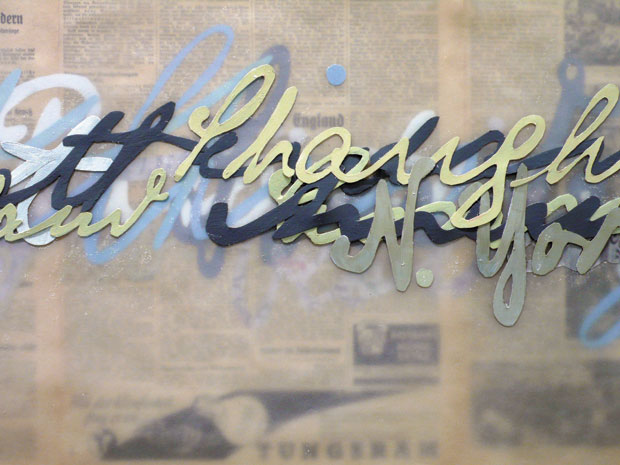Local artist’s exhibition explores long-hidden family secret
Published June 13, 2012
The exhibition “Hidden in Plain Sight” sheds light on a long-kept secret in artist Bunny Burson’s family. The artist’s maternal grandparents attempted to escape from Germany and Latvia between 1938 and 1941, after they helped their children immigrate to the United States. They were unable to get out and Burson’s mother never talked about the tragedy.
In 2009, the artist found dozens of letters they sent to her mother in the U.S. The letters had been in Burson’s mother’s attic for over 50 years.
ADVERTISEMENT
Burson, 64, lives in Richmond Heights and maintains a studio in downtown St. Louis. She is married to Charles Burson and they have two daughters: Clare, 36, and Kate, 32.
Recently, Burson met with the Jewish Light at the Bruno David Gallery to discuss the exhibition.
How did the idea for the show begin?
At different points in my life, I was torn between exploring my family’s past and not exploring it. Did I want to know what happened or did I not want to know? I felt uncomfortable about exploring. I felt that it wasn’t right, that I wasn’t supposed to. In 2010, (my daughter) Clare was going to Latvia to continue researching our family history and she wanted me to accompany her. I finally felt like I had to know what happened.
What are some of the artworks in the exhibition that hold a lot of meaning for you?
Every piece in the show has a reason for being here, either aesthetically or in terms of narrative. One of the first pieces I created is “Untitled 10,” which features oversized handwriting in different colors that’s layered over excerpts from the letters. I wrote in my grandparents’ script and felt like I could make the marks with their hands. My grandmother wrote in correct, very proper German but my grandfather’s writing wasn’t as good.
“Untitled 8” features a German newspaper from 1938. After Clare and I went to Latvia, I traveled to Paris to continue my research and I found the newspaper in an archive there. The pages are from three different dates and show a progression of events. I chose these pages because they give the context of the time and each page has a historic significance. They are covered with a sheet of vellum and the vellum is overwritten with my grandparents’ handwriting, as cutouts, taken from the letters. The vellum represents layers, hidden aspects of life. Everyone’s life is layered and veiled.
ADVERTISEMENT
A number of pieces include images of dice; one piece has an eight ball; several have chessboards. I’ve been interested in games for a long time, as representations of things out of our control. My grandparents’ attempt to get out of Europe was like a game of chance.
The largest piece in the show, “Home,” is made up of 230 cast resin door nameplates, modeled after the original one that hung on my grandfather’s front door. I found the original in my mother’s house. Some of the nameplates include my grandfather’s name, L. Cohen, and some don’t. The blank ones represent all families. For me, the nameplate means home, displacement, and resilience not only for Jews but for all persecuted peoples.
How did you know when the show was finished?
I had a deadline date but I knew I had to do something with the newspaper before I could finish the show. The newspaper had to be in this show; I didn’t want to wait to include it in another one.
What kind of research did you do for the exhibition?
Over the years Clare and I did a lot of research that contributed to this exhibition. She had been researching our family for years, on several trips to Europe, when I found the letters and then I decided to continue the research. The work for this exhibition, both artistic and genealogical, was in progress when I discovered the letters.
I came to the process of this show wanting to give my grandparents a voice, a legacy, a presence, and life. I see them alive in my work.
When did you know you were an artist?
I had lots of lessons as a child (ballet, archery) but art was what I loved the most. I have two degrees in it now, a BFA in printmaking and an MFA in printmaking and drawing. It’s a gift to have the time to devote yourself to something you want to do and be.
Why did you call the show “Hidden in Plain Sight”?
The title came to me when I found the letters in a big envelope in the garage at my mother’s house. We were helping her move out and we took everything down from the attic. The letters had been up there, hidden in plain sight. When I found them, I had the essence of the show.
Will there be a Part II for this exhibition?
Yes, I have a lot more to say and I know where I’ll be headed next. I feel like I can keep digging deeper.
What’s the best piece of advice you’ve been given?
Be authentic in your work.
















